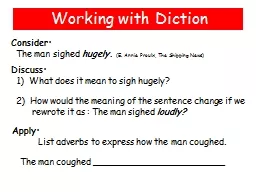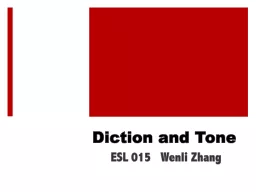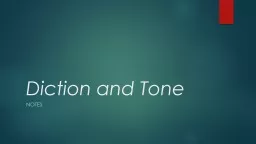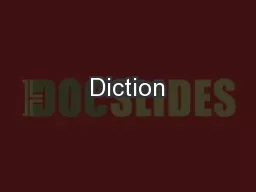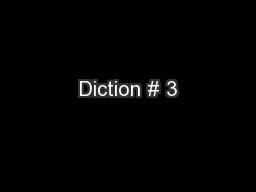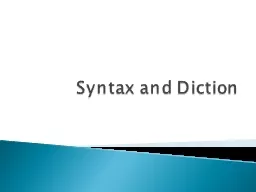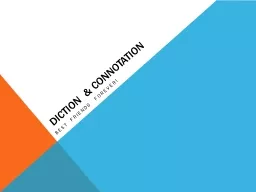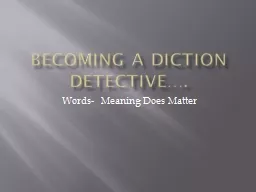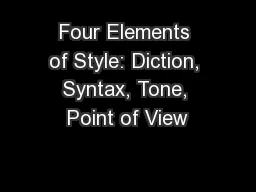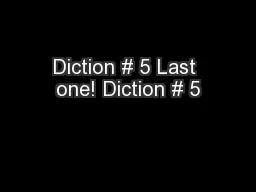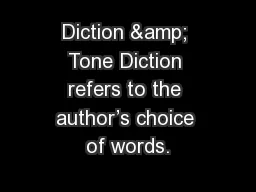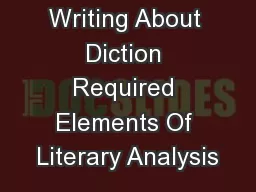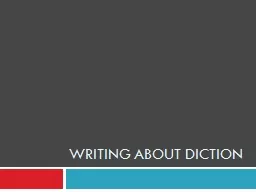PPT-Working with Diction
Author : liane-varnes | Published Date : 2020-01-21
Working with Diction Consider The man sighed hugely E Annie Proulx The Shipping News Discuss 1 What does it mean to sigh hugely 2 How would the meaning of the sentence
Presentation Embed Code
Download Presentation
Download Presentation The PPT/PDF document "Working with Diction" is the property of its rightful owner. Permission is granted to download and print the materials on this website for personal, non-commercial use only, and to display it on your personal computer provided you do not modify the materials and that you retain all copyright notices contained in the materials. By downloading content from our website, you accept the terms of this agreement.
Working with Diction: Transcript
Download Rules Of Document
"Working with Diction"The content belongs to its owner. You may download and print it for personal use, without modification, and keep all copyright notices. By downloading, you agree to these terms.
Related Documents

